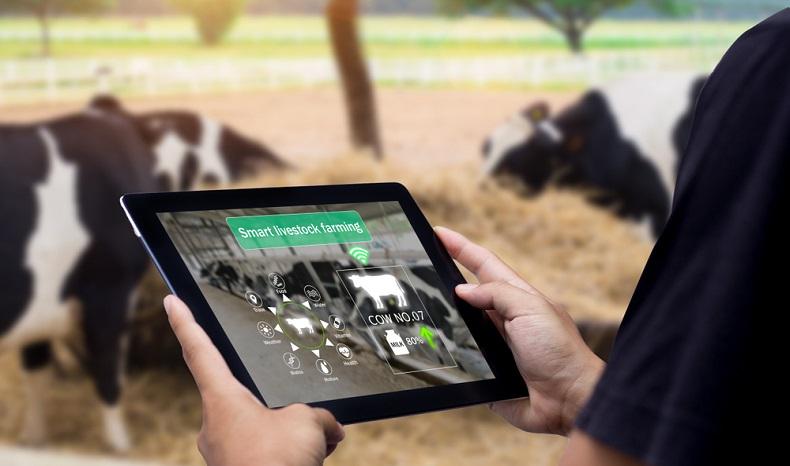Livestock monitoring involves applications of technology to improve profitability and performance of livestock farming. On-site tracking sensors provide data on the location and physical condition of animals instead of solely depending on senses of farmers. Hardware sensors help farmers to keep a track on the overall well-being of animals such as reproduction, feeding behavior, and hygiene. The software ensures safety of animals by assisting farmers. Growth in applications of hardware equipped with cloud-based services fuel the market growth.
COVID-19 scenario Analysis:
- The shut-down of restaurants all over the world has affected the sales of the livestock industry.
- Lamb production, aquaculture, beef, and veal sectors, in particular, are the worst affected.
- The world is estimated to face a shortage in meat products, and hence market players are focusing on using technology to boost the market growth post COVID-19 pandemic.
- One such technological development in the livestock monitoring market is carbon dioxide sensing, which is important for pig and poultry farming during gas stunning, which is used for rendering animals unconscious before slaughtering them for food. In addition, to overcome the shortage of meat, livestock farms would need to be equipped with carbon dioxide sensors. Furthermore, gas sensing is used as modified atmosphere packaging (MAP) in food packaging to increase its lifespan and in food storage by temperature monitoring. Hence, it is interpreted that there is going to be an increase in the sales of gas (carbon dioxide) sensors.
Top impacting factors: Market Scenario Analysis, Trends, Drivers, and Impact Analysis
Rise in need to increase herd size of livestock globally to suffice increase in food demand is anticipated to grow the livestock monitoring market. Investments from various governments, favorable initiatives, and trade policies for the industry also propels the market growth. Rapid implementation of IoT technology in the livestock industry has led to minimization of manual labor and maximization in productivity and profitability level. In addition, the adoption of cloud-based software systems has made livestock monitoring devices more efficient and user-friendly by sharing resources and data to computers and other devices when needed.
The global livestock monitoring market trends are as follows:
Hardware component is expected to hold a major share of the livestock monitoring market
The hardware component held the largest share in the market in 2019, owing to rapid adoption of hardware devices like sensors, smart cameras, and GPS technology in livestock farms. Technological advancements in software and services used in the livestock industry also drive its growth, owing to the need of farmers to produce large amount of supplies in a short period of time.
Livestock monitoring solutions are mainly used in milk harvesting
Livestock monitoring solutions are majorly applied in the milk harvest management. Increase demand for milk yield, efficiency in production, and dairy products worldwide has led to their widespread adoption, which leads to the market growth.
Livestock monitoring market in Asia-Pacific expected to grow rapidly
Asia-Pacific consists of 60% of the world’s population, hence livestock suppliers are required to be more efficient and productive to cater to the demand of the population. The region cannot solely rely on the knowledge and senses of farmers, hence to meet the growing need, livestock farms need to be monitored by making use of certain technologies, which is anticipated to lead to lead to rapid growth in the livestock monitoring market.
North America is expected to lead the market
Implementation of technologically advanced devices like RFID, sensors, smart cameras, and GPS and high demand to decrease the cost related to livestock rearing are expected to boost the market growth in North America.
Implementation of technology on livestock farms is expected to optimize the productivity of livestock, hence maximizes herd performance and ensures secure and prosperous future for livestock suppliers. Main benefits of livestock monitoring market are as follows:
- Highly accurate oestrous detection, which is important for efficient reproduction
- On-time alerts on the health conditions of animals
- Supervising activities on a large scale to enable large farm owners monitor their livestock
- Easy-to-use, user friendly system equipped with cloud services, which can be used from anywhere
- Keeps other stakeholders like vets and nutritionists updated
Key benefits of the report:
- This study presents the analytical depiction of the global livestock monitoring market along with the current trends and future estimations to determine the imminent investment pockets.
- The report presents information related to key drivers, restraints, and opportunities along with detailed analysis of the market share.
- The current market is quantitatively analyzed to highlight the global market growth scenario.
- Porter’s five forces analysis illustrates the potency of buyers & suppliers in the market.
- The report provides a detailed market analysis on the basis of competitive intensity.
Questions answered in the livestock monitoring market research report:
- Who are the leading market players in the livestock monitoring market?
- What are the current trends that would influence the market in the next few years?
- What are the driving factors, restraints, and opportunities in the market?
- What are the projections for the future that would help in taking further strategic steps?
- What would be the detailed impact of COVID-19 on the market?
Livestock Monitoring Market Report Highlights
| Aspects | Details |
| By Animal Type |
|
| By Application |
|
| By Component |
|
| By Region | |
| Key Market Players | SmaXtec, Afimilk Ltd., Allflex, SENSAPHONE, GEA Group Aktiengesellschaft, COWMANAGER, DeLaval, Hokofarm Group , HID Global Corporation (ASSA ABLOY), DAIRYMASTER |
Loading Table Of Content...




